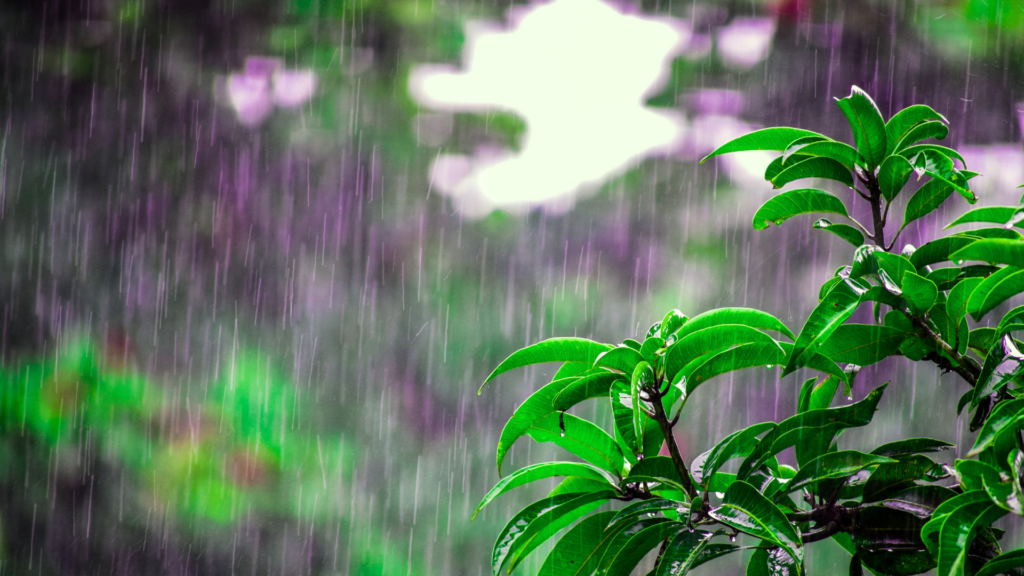
The Midwest region of the United States is known for its diverse and often unpredictable weather patterns. From scorching summers to freezing winters, navigating the extremes can be challenging for gardeners and landscapers alike. However, with the right strategies and preparations, it’s possible to create a thriving garden and landscape that can withstand the elements. In this blog post, we’ll explore some essential tips and techniques for gardening and landscaping in the extreme weather conditions of the Midwest.

Navigating the Elements
In the Midwest, residents often find themselves navigating a wide array of extreme weather conditions throughout the year. From the scorching heatwaves of summer to the bone-chilling cold of winter, the region experiences it all. Severe thunderstorms are a common occurrence during the warmer months, bringing with them the threat of strong winds, hail, lightning, and flash floods. Tornadoes, aptly known as a staple of “Tornado Alley,” can strike with little warning, causing widespread destruction and chaos. In the winter, blizzards blanket the landscape in snow and ice, accompanied by biting winds and subzero temperatures. Heatwaves can grip the region in the summertime, pushing temperatures to uncomfortable and potentially dangerous levels. Additionally, droughts and flooding events pose significant challenges to agriculture, infrastructure, and communities alike. The diverse and often unpredictable nature of extreme weather in the Midwest underscores the importance of preparedness and resilience for residents and outdoor enthusiasts alike.

Hope For The Best, Prepare For The Worst
Caring for garden plants during severe weather events requires proactive measures to protect them from potential damage. Here are some tips for each type of extreme weather:
Severe Thunderstorms:
- Secure loose items in the garden, such as pots, decorations, and tools, to prevent them from becoming projectiles in high winds.
- Consider installing a windbreak, such as a fence or sturdy shrubs, to reduce wind damage to plants.
- If possible, move potted plants to a sheltered location, such as a garage or covered porch, during the storm.
Tornadoes (High Winds):
- Anchor large plants and trees with sturdy stakes and ties to prevent them from toppling over in strong winds.
- Prune dead or weak branches to reduce the risk of falling debris during a tornado.
Blizzards (Extreme Cold):
- Mulch around the base of plants to insulate roots and protect them from freezing temperatures.
- Cover delicate plants with frost cloth or burlap to provide additional protection from cold winds and frost.
- Consider using plant covers or cloches to shield individual plants from snow and ice during a blizzard.
Heat Waves & Drought:
- Water plants deeply and regularly during periods of extreme heat and drought to keep the soil moist and prevent dehydration.
- Apply mulch around plants to conserve soil moisture and reduce evaporation.
- Provide shade for sensitive plants by using shade cloth or temporary structures to shield them from direct sunlight during heatwaves.
Flooding:
- Plant in raised beds or mounds to improve drainage and prevent waterlogging during floods.
- Avoid planting in low-lying areas prone to flooding, if possible.
- Install rain gardens or swales to help absorb excess water and prevent erosion during heavy rainfall.
By taking these precautions and planning ahead, you can help protect your garden plants from damage during severe weather events.

To Prune Or Not To Prune
In the world of gardening, pruning is a vital practice for maintaining the health and appearance of plants. However, when faced with extreme temperatures, whether scorching heat or freezing cold, the timing and technique of pruning become crucial considerations. Pruning during extreme heat can stress plants further, potentially leading to sunburn or dehydration. It’s best to avoid pruning during the hottest part of the day and instead opt for early morning or late afternoon when temperatures are cooler. On the other hand, pruning during extreme cold can expose plants to further damage, especially if they’re already struggling to withstand freezing temperatures. It’s essential to wait until temperatures rise above freezing before pruning, as frozen tissues are more susceptible to injury. Additionally, when pruning during extreme temperatures, it’s crucial to use sharp, clean tools and make precise cuts to minimize stress and promote healthy growth. By being mindful of the weather conditions and employing proper techniques, gardeners can ensure that their plants thrive even in the face of extreme temperatures.

Resilient Roots
Selecting resilient species of plants for your garden and landscape is essential for creating a thriving outdoor space that can withstand the diverse and often unpredictable weather conditions of the Midwest. Resilient plants are those that have evolved to tolerate a wide range of environmental stressors, including temperature fluctuations, drought, and intense sunlight. When choosing plants for your garden, opt for native species or cultivars that are well-adapted to the local climate and soil conditions. Look for plants with traits such as deep root systems, drought tolerance, disease resistance, and the ability to thrive in challenging conditions. By selecting resilient species, you can create a low-maintenance and sustainable landscape that not only survives but thrives in the face of weather extremes, enhancing the beauty and functionality of your outdoor space for years to come.
The top five most resilient plants for the Midwest region vary depending on specific location, soil type, and other environmental factors. However, some generally resilient plants that are commonly recommended for the Midwest include:
- Purple Coneflower (Echinacea purpurea): Native to the Midwest, purple coneflowers are known for their drought tolerance, resistance to pests and diseases, and ability to attract pollinators.
- Black-eyed Susan (Rudbeckia hirta): Another native plant, black-eyed Susans are adaptable to a wide range of soil and light conditions, drought-tolerant, and provide long-lasting blooms in summer.
- Switchgrass (Panicum virgatum): A native grass species, switchgrass is well-suited to the Midwest’s climate, offering erosion control, drought tolerance, and providing habitat for wildlife.
- Eastern Redbud (Cercis canadensis): This small tree is known for its hardiness, tolerance to various soil types, and beautiful spring blooms of pink or purple flowers.
- Serviceberry (Amelanchier spp.): Also known as Juneberry, serviceberry is a versatile shrub or small tree with attractive white flowers in spring, edible berries in summer, and vibrant fall foliage. It is adaptable to various soil and light conditions.
These plants are not only resilient to the Midwest’s climate extremes but also contribute to the region’s biodiversity and provide essential habitat for local wildlife.
Mastering plant care in the ever-changing weather extremes of the Midwest requires a combination of knowledge, preparation, and adaptability. From scorching summers to freezing winters, and everything in between, you must be equipped with the right tools and techniques to ensure the health and vitality of your plants. By selecting resilient species, implementing water-saving techniques, protecting plants from extreme temperatures, creating windbreaks, and planning for drainage, you can create thriving outdoor spaces that withstand the challenges of the Midwest climate. With careful attention and a proactive approach, it’s possible to not only survive but thrive in the face of weather extremes, creating beautiful and resilient landscapes that enhance the natural beauty of the Midwest!
